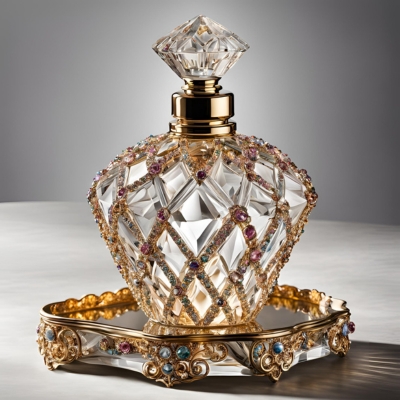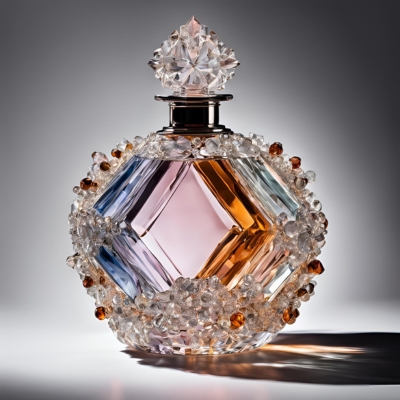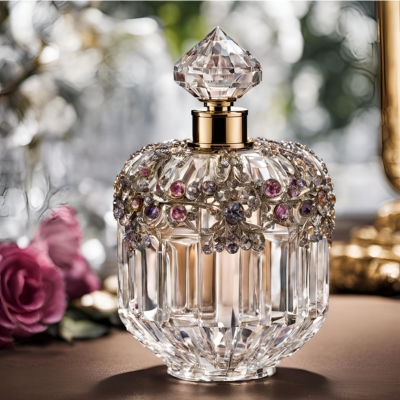Perfume Ingredient Spotlight: Natural vs. Synthetic Scents
The global fragrance market is expected to reach a whopping $60 billion in 2025. This statistic underlines just how pivotal the world of scents is to modern consumers, who are increasingly conscious of the ingredients in their products. As you navigate the aisles of your favorite fragrance retailer, you may find yourself pondering the differences between natural and synthetic ingredients in perfumes. The choices you make can substantially impact your personal identity and the emotions evoked by the scents you wear.
Consider a moment when your favorite scent transported you to a cherished memory, perhaps a warm summer day spent with friends or a beautiful evening celebrating a milestone. This connection highlights the power of fragrance and the importance of understanding the underlying components that create them. In this perfume ingredient spotlight: natural vs. synthetic scents, we will delve into the characteristics, sourcing, and popularity of these ingredients, equipping you with the knowledge you need to make informed choices in your fragrance journey.

Understanding Perfume Ingredients
To fully appreciate the art of perfumery, understanding the types of ingredients that compose fragrances is essential. In the world of perfume, you will encounter two primary categories of ingredients: natural and synthetic. Each type has its unique properties, and both contribute significantly to fragrance production methods.
Definition of Natural and Synthetic Ingredients
Natural perfume ingredients originate from plant materials such as flowers, fruits, leaves, and woods. These elements are cherished for their authenticity and rich, complex aromas. Conversely, synthetic perfume ingredients are chemically engineered to replicate scents found in nature or to create new, innovative aromas. The use of these man-made components allows perfumers greater flexibility in crafting fragrances, often at a lower cost and with a lower environmental footprint compared to some natural sources.
The Role of Ingredients in Fragrance Creation
The choice between natural versus synthetic perfume ingredients directly influences the final scent profile. Natural ingredients typically have varying qualities that can change with each harvest, while synthetic components offer consistency in scent. This characteristic enables perfumers to formulate fragrances that meet precise olfactory standards. Moreover, you should consider the ethical and environmental aspects tied to sourcing these ingredients. Understanding these elements will enhance your appreciation for the complex world of fragrances, providing insight into how the scents you enjoy are crafted.
The Science of Scent Chemistry
Understanding the intricacies of scent chemistry reveals the fascinating interplay of aromatic notes in perfume creation. Aromatic notes serve as the backbone of any fragrance, providing a unique structure that contributes to the overall scent profile. These notes can be categorized into three distinct groups: top, middle, and base notes. Each category plays a significant role in how a fragrance is experienced over time.
Aromatic Notes and Their Importance
Aromatic notes comprise the various scents that change as you wear a perfume. The initial impressions from top notes are vibrant and fleeting, creating an immediate allure. As these fade, the middle notes emerge, offering a richer, more rounded scent. Finally, the base notes develop, providing depth and longevity. This dynamic evolution highlights the significance of each category in achieving a harmonious fragrance experience.
How Fragrance Compounds Interact with Each Other
The interaction between fragrance compounds adds layers of complexity to perfumes. Each compound contributes different characteristics, creating a tapestry of scents that can shift throughout the day. Understanding how these compounds interact can enhance your appreciation for the artistry behind perfumery. By recognizing the relationship between various notes, you can better identify which combinations resonate with your personal style.

Exploring Natural Fragrances
Natural fragrances captivate many with their genuine and holistic appeal. You may find that organic fragrances offer a safer alternative to synthetic perfumes, largely due to their pure composition. The increasing popularity of these scents aligns with a growing awareness of wellness and environmental sustainability.
Benefits of Organic Fragrances
Incorporating organic fragrances into your daily routine comes with several advantages. Many individuals appreciate the benefits of natural scents that originate from plants, which often present fewer allergens and irritants compared to synthetic options. Some recognized benefits include:
- Enhanced mood and emotional well-being
- Lower likelihood of skin irritations
- Promoting relaxation and stress relief
Popular Essential Oils in Perfumery
Essential oils in perfumery serve as the backbone of many organic fragrances. They are celebrated for their distinct characteristics and therapeutic effects. Popular essential oils include:
- Lavender: Known for its calming properties, this oil promotes relaxation and ease.
- Bergamot: A citrus delight, bergamot uplifts your spirits with its bright scent.
- Sandalwood: Grounding and earthy, this oil is often utilized for its balancing qualities.
Evaluating Synthetic Scents
Synthetic scents play an essential role in modern perfumery, providing both opportunities and challenges. Understanding the advantages of artificial scents and addressing misconceptions about synthetic ingredients can guide your choices in fragrance selection.
Advantages of Artificial Scents
The benefits of synthetic scents extend far beyond mere convenience. They offer:
- Consistency: Synthetic ingredients provide a uniform scent profile, ensuring each batch of perfume smells the same.
- Cost-effectiveness: Many artificial scents are more affordable to produce, making luxury fragrances more accessible.
- Sustainability: Artificial fragrances can reduce reliance on natural resources, helping to protect endangered plant species.
- Novelty: Synthetic scents can replicate rare or impossible aromas, allowing perfumers to create unique fragrances.
Common Misconceptions about Synthetic Ingredients
Despite their benefits, several misconceptions about synthetic ingredients persist. Addressing these can help you make informed choices:
- Harmfulness: Many believe synthetic scents are toxic. In reality, numerous synthetic ingredients are thoroughly tested for safety.
- Effectiveness: Some assume synthetic ingredients cannot match the complexity of natural scents. In truth, skilled perfumers can achieve remarkable nuances with synthetic components.
- Environmental impact: A common myth suggests that synthetic fragrances always harm the environment. Many artificial scents are actually created with eco-friendly practices.

Throughout this article, you've explored the captivating world of perfume ingredients, particularly the differences between natural vs. synthetic scents. Understanding these ingredients not only enriches your knowledge but also empowers you to make informed fragrance choices that resonate with your values and lifestyle.
Whether you prefer the authenticity of natural scents or the innovation of synthetic compositions, your fragrance choices reflect your individuality. Exploring both options allows you to embrace the best of both worlds in your scent journey.
Related Articles
The Captivating History of PerfumesHow to Choose the Perfect Perfume
Understanding Fragrance Families
Mastering Perfume Layering
Top Luxury Perfume Brands
Shop Perfumes on Amazon
